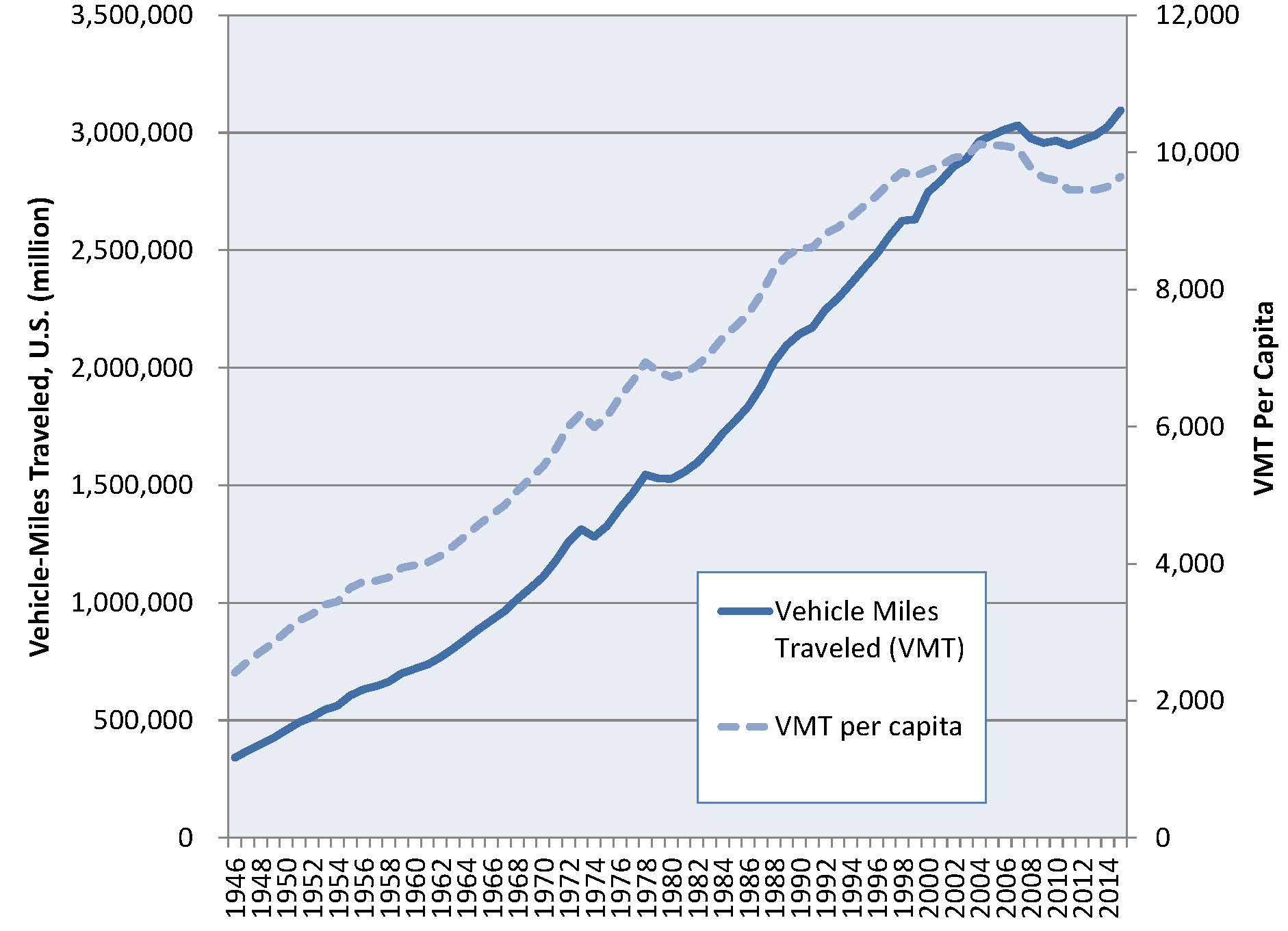
Driving Isn’t Rising (Quite) as Fast as We Thought
There are good reasons to believe that the recent rapid rate of growth of vehicle travel will not continue for long. But there are also many reasons to support public policy changes that will give more Americans the option not to drive and further reduce growth in vehicle travel in the years ahead.
The Federal Highway Administration has released final estimates of the number of miles Americans traveled on the nation’s roads in 2015. We at Frontier Group have followed trends in vehicle-miles traveled (VMT) closely for many years, for a number of reasons: VMT is important for assessing the contribution of transportation to climate change, and trends in VMT are important as indicators of changes in transportation behavior and for effective planning for future infrastructure development.
As we’ve described before, the growth of VMT in the United States – which had been rapid and steady with the exception of a few short hiccups from World War II through the early 21st century – stalled out in the mid-2000s. The number of miles traveled per capita fell every year from 2005 to 2011, and total VMT hit a peak in 2007 that it did not surpass again until 2015.
The new figures for 2015 are significantly revised from the monthly estimates the FHWA publishes as part of its Traffic Volume Trends series of reports. Whereas monthly reporting showed that VMT had increased by 3.4% in 2015, the final figures published in the FHWA’s Highway Statistics report showed an increase of only 2.3%. (See Figure 1.)
Figure 1. Total and Per-Capita VMT (Data: FHWA and U.S. Census Bureau)

That is still a faster rate of increase than any year since 2004, but it is not nearly as rapid as had been initially thought. This is the second consecutive year that final annual VMT estimates were revised down from the monthly estimates: in 2014, the revision was approximately -0.5%, in 2015, it was about -1.1%.
What does this mean? For one thing, it means that, despite economic recovery, per-capita VMT continued to remain about 4.7% below its previous peak in 2004. Indeed, the average American drove about as many miles in 2015 as he or she did in 1998 – 17 years earlier.
And we are still not driving nearly as many miles as forecasters thought we would just a few short years ago. The chart below compares actual vehicle travel through 2015 with an array of forecasts of vehicle travel made by governmental entities and transportation organizations since the late 1990s. While vehicle travel is running slightly ahead of the most recent forecasts made by experts working with the U.S. Department of Energy and the Federal Highway Administration, it is still well below the level anticipated in previous forecasts.
Figure 2. VMT: Forecasts vs. Reality

As of earlier this fall, vehicle travel was still rising at a steady clip, according to FHWA monthly data – leading to increased dependence on oil, higher greenhouse gas emissions, and likely more deaths and injuries on our roads. There are good reasons to believe that the recent rapid rate of growth of vehicle travel will not continue for long. But there are also many reasons to support public policy changes that will give more Americans the option not to drive and further reduce growth in vehicle travel in the years ahead.
Authors
Tony Dutzik
Associate Director and Senior Policy Analyst, Frontier Group
Tony Dutzik is associate director and senior policy analyst with Frontier Group. His research and ideas on climate, energy and transportation policy have helped shape public policy debates across the U.S., and have earned coverage in media outlets from the New York Times to National Public Radio. A former journalist, Tony lives and works in Boston.
